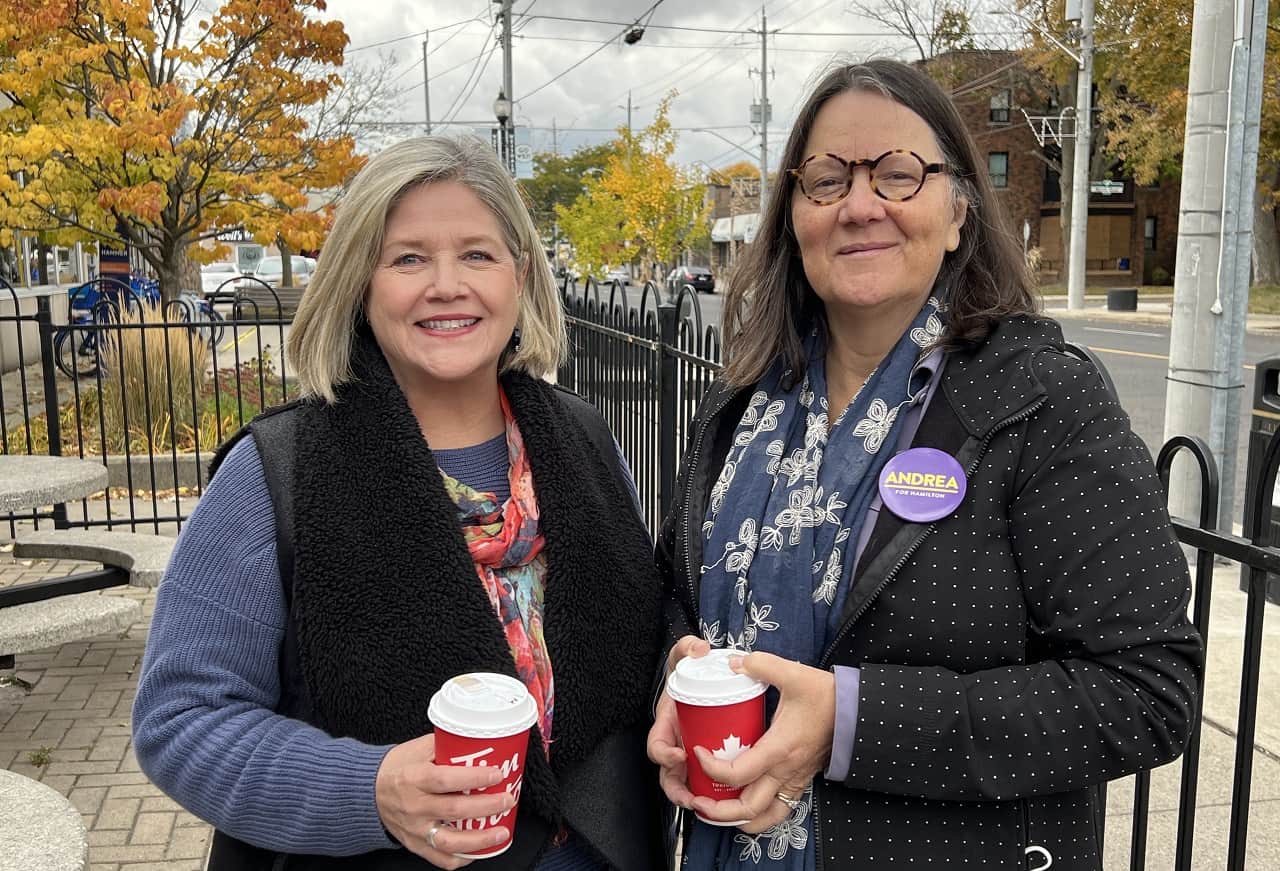Hamilton MPP joins call for Ford to respect urban boundaries
Published February 3, 2023 at 5:54 pm

Hamilton-area New Democrat Sandy Shaw and her party have signalled their next move intended to preserve farmland within cities’ geographical limits.
Hamilton city council voted unanimously this week to say that Premier Doug Ford-led PC Party of Ontario government’s plans to allow residential development on heretofore protected farmland is “unnecessary.” On Friday, the Ontario New Democratic Party said it will use the upcoming legislative session to push the Ford government to direct municipalities to tailor their official plans to build “within existing urban boundaries, in areas already zoned for development.” The statement was attributed to Shaw, who represents Hamilton West—Ancaster—Dundas, and NDP Housing Critic Jessica Bell (University—Rosedale).
“We can build all the homes Ontarians need within existing urban boundaries, without turning irreplaceable farmland into a concrete jungle of highways and unaffordable sprawl,” stated Shaw (pictured, right), who joined Hamilton Mayor Andrea Horwath (pictured, left) on the municipal campaign trail last fall. Horwath was the party’s leader for 13 years.
Namely, the opposition NDP says that it will introduce an urban boundary-protecting bill on Feb. 21. Typically, though, bills introduced by the opposition parties at Queen’s Park do not get very far.
However, that date will fall within the campaign period for the Hamilton Centre byelection to decide Horwath’s successor at Queen’s Park. The premier and their cabinet have six months from the time they learn of a vacant seat to instruct the lieutenant-governor to set a byelection date. Those six months will be up for Ford around Feb. 17.
Boundary freeze was overturned
Numerous municipalities and environmental groups have warned about the environmental effects on human health that could result from continued sprawl and loss of farmlands in Ontario. The provincially mandated urban boundary expansion in Hamilton is the subject of a lawsuit, and the Ontario integrity commissioner is also investigating the Greenbelt expansion after reports that developers who are PC Party donors bought the land before it was opened to development. Indigenous nations have also said there was a lack of consultation before the changes.
“We need to plan for a future that puts people first: where everyone has a home, and housing is affordable. Where Ontarians can easily walk or take public transit to their destination,” Bell stated. “And where every resident has access to good services, from schools to parks to community centres.”
Ford has denied claims his government tipped off developers about Greenbelt changes, which take out designated lands and replace them with other lands. As party leader before the 2018 election, a leaked video showed him at an event saying, “We will open up the Greenbelt, not all of it, a big chunk of it.” For over four years, he maintained his party would respect a public consensus not to touch it.
Hamilton and Halton Region, among others, went through a prolonged process in 2021 and ’22 of trying to set an urban boundary, while completing the province’s assignment to plan to meet population and job targets through to 2051. (Previously, official plans were in 10-year increments, not 30.) Both regions have a shortage of housing supply but also have a bulk of the relatively scant prime farmland in Ontario’s Golden Horseshoe region.
In the case of Hamilton, the Ontario environmental registry rejected its urban boundary freeze last Nov. 4. It ordered the addition of 2,200 hectares in Hamilton to the urban boundary. Concomitantly, the province’s Greenbelt plan opened another 795 hectares to development.
Horwath said at a council committee meeting Wednesday that she continues to oppose development on lands that were in the Greenbelt. Ultimately, though, cities are creatures of the Ontario government.
The motion that the mayor and all councillors present voted for 15-0 that day for says neither development change is needed in Hamilton. Ward 8 Coun. John-Paul Danko, in composing it, stated that the city already has approvals and space set aside for some 37,000 new housing units.
The province wants Hamilton to built 52,400 new homes by 2031 to contribute toward its plan to build 1.5 million homes across the province in a decade. (That is also more than twice as many homes than have ever been built in a decade in Ontario, according to the Smart Prosperity Institute.)
Meantime, all four parties now have candidates for the Hamilton Centre byelection. Ford’s party was the last to announce a candidate. Peter Wiesner, 22-year Hamilton Police officer who is presently a sergeant, and is also a social outreach worker, is running for the PC Party, as reported by the Bay Observer on Friday.
Sarah Jama, who is executive director at the Disability Justice Network of Ontario, became the NDP candidate three months ago on Nov. 4. The Green Party of Ontario have nominated Lucia Iannantuono, a hardware designer and member of the Hamilton 350 climate justice group. The Ontario Liberals have nominated Deirdre Pike, an equity consultant and researcher who also ran in 2018.
insauga's Editorial Standards and Policies advertising





